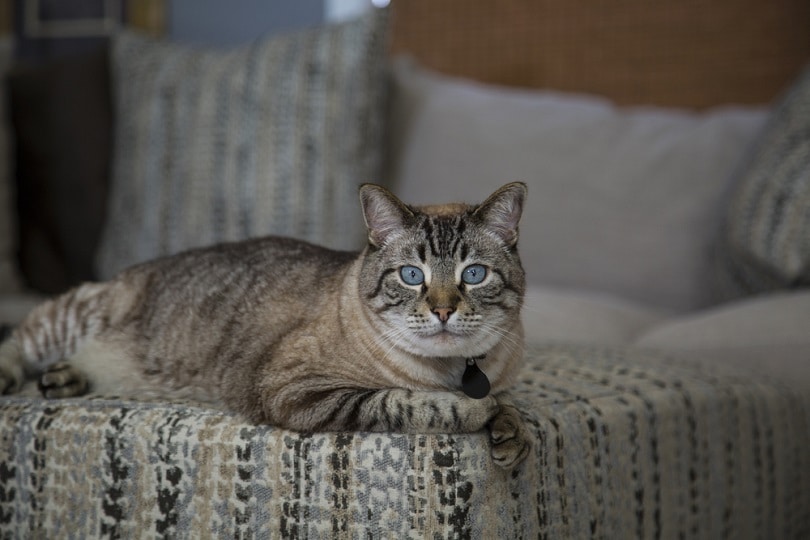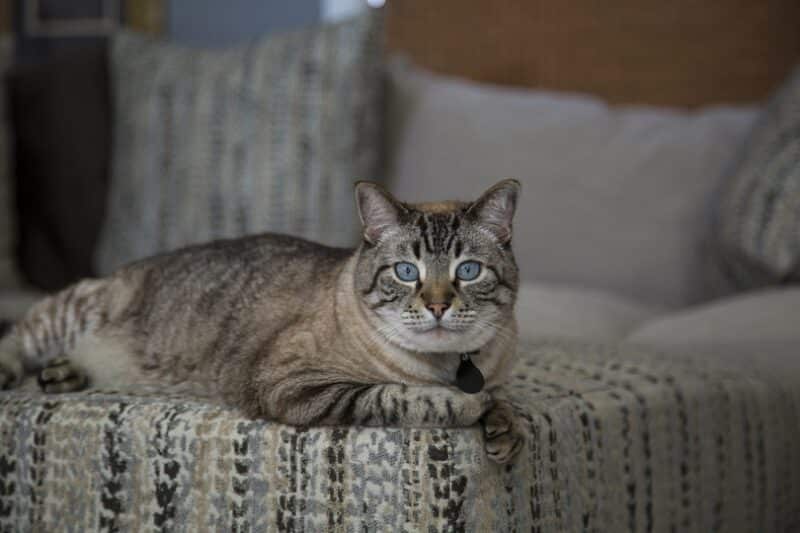Siamese cats are known for their gorgeous pointed coats and sunny personalities. The loveable cats are affectionate, sweet, and love interacting with humans. As one of the oldest breeds around, they come in a variety of colors and have stunning blue eyes, but their propensity for vocalizing — is what makes them really stand out from other breeds.
Regarding purring, Siamese cats don’t purr any more or less than other cats. Read on for a few fun tidbits about the stunning cats and why they meow and purr!
Is It True That Siamese Cats Love to Talk?
Absolutely! They’re a seriously vocal bunch of kitties. They’ll happily respond to their humans when spoken to and will frequently vocalize. They’ll meow to let you know they’re hungry, bored, want to be petted, want you to open the back door, are interested in a hit of catnip, would like their favorite blanket, and just about everything else under the sun. While Siamese cat vocalization is generally an adorable trait, it can become overwhelming if the cat gets stressed or bored.
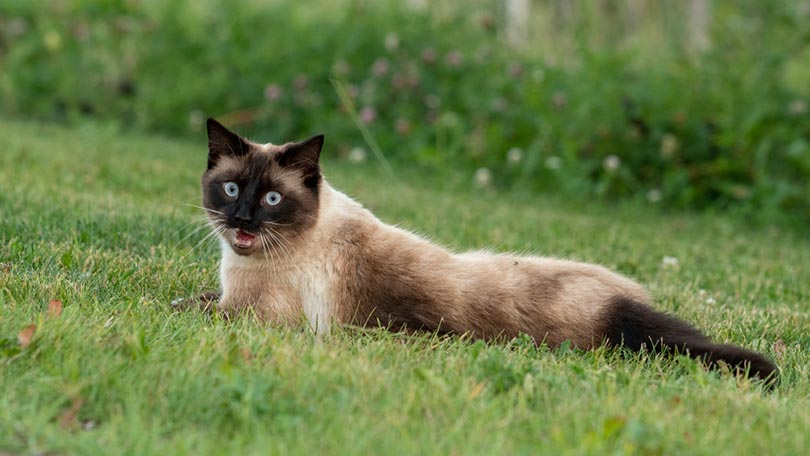
So What About Purring?
While Siamese cats meow more than most other breeds, they don’t purr any more or less than other cats. They’re friendly and inclined to purr up a storm when being petted or enjoying other interactions with their favorite people.
While cats tend to purr when they’re content, they also do so for other reasons scientists are just now beginning to understand. Cats purr as a way to self-soothe when stressed. It appears that they also purr to reduce pain, and there’s evidence that purring at some frequencies can even promote bone repair.
Not all cat purrs are the same. Kitties often purr when hungry, but scientists have discovered these purrs often contain hidden little cries, like those made by human babies. Surprisingly, humans can generally tell the difference between the different types of purrs.
What Do Siamese Cats Look Like?
You’re probably already familiar with the “standard” Siamese cat look, featuring creme or silverish fur highlighted by dark markings around the cat’s ears, tail, and paws. However, the gorgeous cats come in shades of orange, lilac, brown, and blue. But all Siamese cats have dark pointing and striking blue eyes. They tend to be elegant, slender creatures and weigh anywhere from 8 to 15 pounds. Balinese cats are long-haired versions of the breed, and Himalayan cats are long-haired Siamese-Persian mixes.
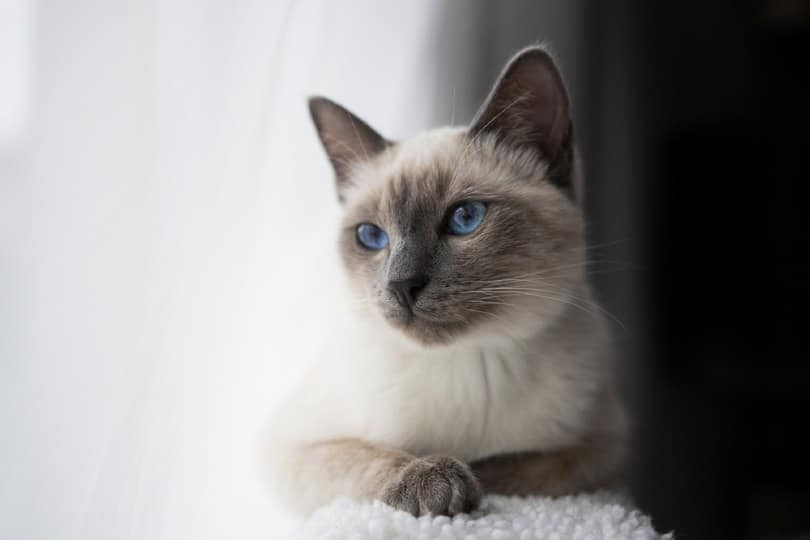
Do Siamese Cats Make Good Pets?
Absolutely. They’ve been one of the most popular breeds in the United States since the late 1800s when the United States consul based in the Kingdom of Siam sent one of the cats to President Rutherford B. Hayes.
They’re shorthaired, don’t require much grooming, and enjoy being around people, making them great family pets. However, they tend to develop strong bonds with one person.
They’re intelligent and can get bored quite easily, and bored Siamese cats aren’t shy about showing their displeasure with the state of things—often through excessive meowing.
Siamese cats do well when they have several toys to play with and mentally stimulating activities, like food puzzles, to keep them busy. Because they’re so smart, ignoring them rarely works, and they’ll quickly figure out what drives you crazy and engage in that activity until you relent and give them the attention they need. Because they’re social and enjoy being around people, the breed tends to develop separation anxiety if left alone for long periods.
They’re usually relatively easy to train, and teaching your Siamese kitty tricks or walking on a leash provides tons of benefits. Not only will it provide the mental and physical stimulation the cats require, but it’s also a great bonding activity that helps reduce kitty boredom and minimize boredom-related naughtiness.
As purebred felines, they’re sometimes prone to health problems, such as hypertrophic cardiomyopathy. However, they’re reasonably healthy, often living 15 to 20 years.
Where Does the Name Come from?
Siamese cats are one of the oldest breeds and were first bred in Siam, now known as modern Thailand, way back in the 14th century. They’re described in the Tamra Maew manuscripts, or Cat Book Poems, from Ayutthaya, which was the Southeast Asian Kingdom that dominated what’s now central and northern Thailand between the 14th and 18th centuries.
Siamese cats look pretty different from the ones first bred back in the 1300s. The original breed did not have angular faces and bodies and resembled modern Thai cats more than the cats we now recognize as Siamese.
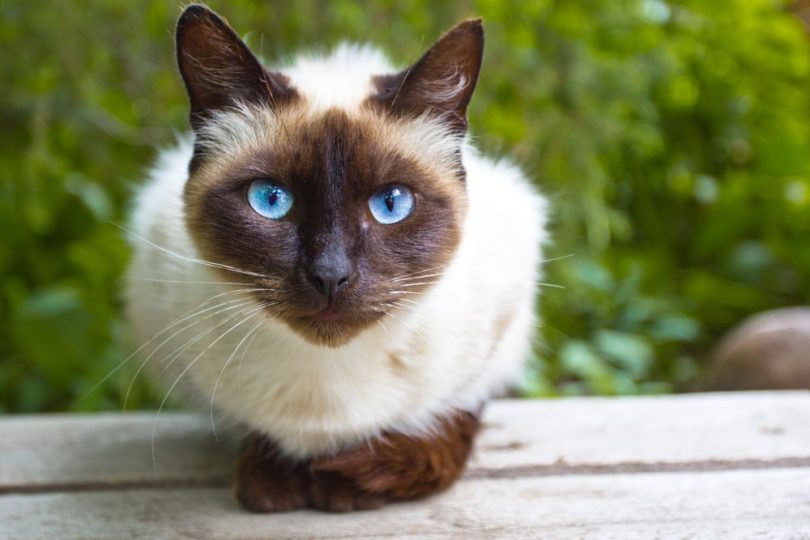
Final Thoughts
Siamese cats are friendly pets that love to interact with people. They’ll happily purr up a storm when content and cuddling with their favorite person. They’re beautiful, social, intelligent, and easy to love. However, they like to make their opinions known and happily meow to get their point across.
Featured Image Credit: Kolander Art, Shutterstock

